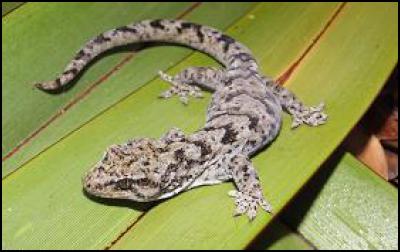Geckos go bush in Riccarton
Geckos go bush in Riccarton

More than 40
Canterbury geckos are tonight settling into a leafy new home
in Riccarton Bush.
Until now, these geckos have been living in the unstable Crater Rim rocky bluffs above earthquake-damaged Sumner Road. Planned work on this rock -- to reduce the risk of it falling onto passing vehicles as the road is repaired and reopened - means the geckos need a new home.
More than 40 lizards were caught by specially trained abseilers earlier this week, with plans to move 200 in total to Riccarton Bush over coming weeks. Some were coaxed from crevices by hand, others caught when the rocks they were sheltering under were carefully lifted. None were harmed. The skinks were then released in nearby tussock but the rarer Canterbury geckos have been moved to Riccarton Bush.
Council Facilities and Infrastructure Director John Mackie says the Council has been working closely with a herpetologist (lizard expert) and the Department of Conservation to reduce the effect of Sumner Road repairs on nearby plants and animals.
"It may seem strange to move geckos from rock to bush but before humans arrived in Canterbury, many geckos would have lived in the forest canopy. We no longer have geckos in our bush due to predators, not personal preference, and this is why we are excited about settling up this new population," says John Mackie.
Riccarton Bush was chosen because it has 7.8 hectares of established forest surrounded by a state-of-the-art pest and mammal-proof fence that keeps out predators.
"We've been told their survival chances will be very high due to being released in a predator-free sanctuary," says John Mackie.
Up to 20 adults will be fitted with small radio-transmitters to follow their movements over the next three months. Post-graduate university students have proposed to monitor the geckos over the long term.
ends


 Gordon Campbell: On What’s Wrong With The Treaty Principles Bill
Gordon Campbell: On What’s Wrong With The Treaty Principles Bill NZ National Party: National Acknowledges The Passing Of Hon Nikki Kaye
NZ National Party: National Acknowledges The Passing Of Hon Nikki Kaye Mana Mokopuna: Children And Young People Share Vital Insights On Healing From Family Violence And Sexual Violence In New Report
Mana Mokopuna: Children And Young People Share Vital Insights On Healing From Family Violence And Sexual Violence In New Report NZ Government: PM Marks One Year In Government
NZ Government: PM Marks One Year In Government Helen Clark Foundation: Helen Clark Foundation Calls For Political Action To Reduce The Prevalence Of Junk Food And Improve Health Outcomes
Helen Clark Foundation: Helen Clark Foundation Calls For Political Action To Reduce The Prevalence Of Junk Food And Improve Health Outcomes Justice Committee: Further Decisions About Submissions Process For The Principles Of The Treaty Of Waitangi Bill
Justice Committee: Further Decisions About Submissions Process For The Principles Of The Treaty Of Waitangi Bill Infrastructure New Zealand: Single Agency Needed To Coordinate Climate Adaptation And Recovery
Infrastructure New Zealand: Single Agency Needed To Coordinate Climate Adaptation And Recovery


